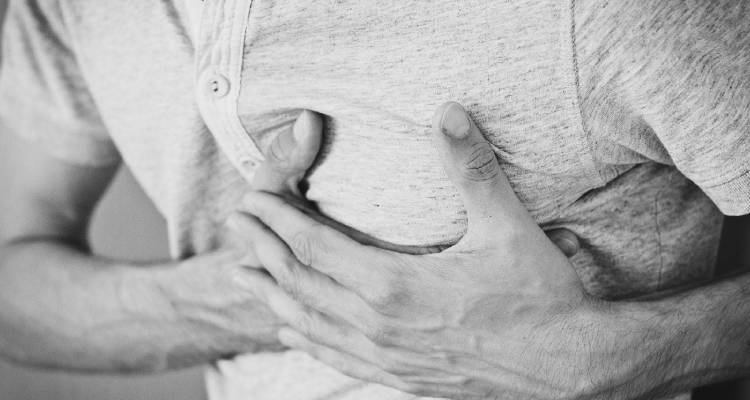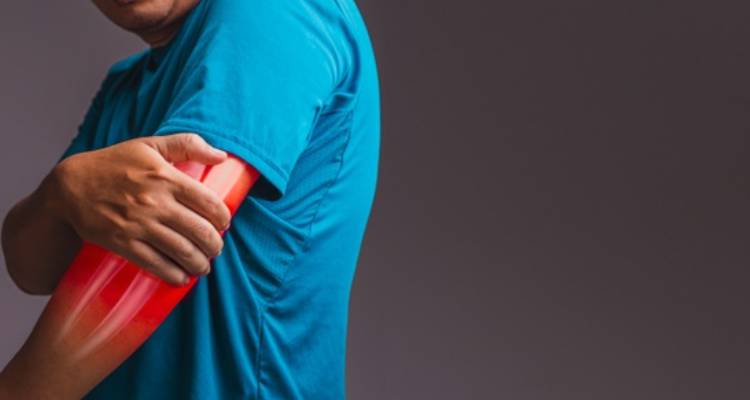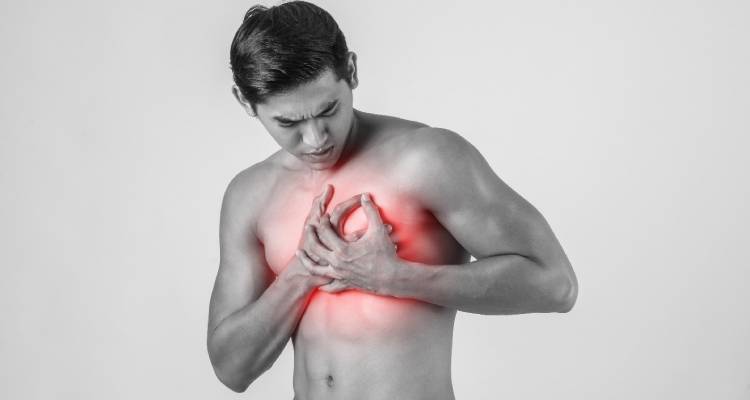Pain in left arm and chest
Small left arm aches and pains are also a standard part of aging. Sudden or irregular left arm pain, though, may be a symptom of a more complex medical condition.
It may be a symptom of an illness that needs to be treated or the effect of a heart attack in the worst case. Anxiety may be the reason if you’re having left arm pain. Stress may cause the arm muscles to become tight, and discomfort can result from that tension.
Symptoms of pain in the left side of the arm and chest

Muscle strain is the most probable source of arm pain, often the product of fear; it is not the only likely cause. Other potential causes are heart attack, angina, and injuries.
Other symptoms Include
The pain in the left side of the arm and chest other symptoms that can happen along with pain in the arm
Symptoms that can happen with arm pain include the following:
- Pain in the back, neck, or shoulder
- Burning sensation in your arm
- Insomnia
- Pressure in knees
- Spasms in the muscles
- Numbness
- Reduced mobility of elbows
- Bumps of blood
- Skin discolouration, such as bruising
- Inflammation
- The unexpected loss of weight
- Symptoms similar to the flu (fatigue, fever, sore throat, headache, cough, aches, and pains)
Causes of pain in the left arm and chest

Heart attack
Origins of left arm pain differ. A heart attack is the most well-known of them. In this case, arm pain can be followed by chest pain or a squeezing sensation, back, throat, shoulder, or jaw pain, fatigue, shortness of breath, dizziness, or tiredness.
Angina may also cause left arm pain. Related signs are present, but they only last a few minutes. The effect of making tense muscles due to tension can also be discomfort.
Similarly, bone, joint or soft tissue damage or problem can cause arm pain, inadequate drainage of blood, and improper posture sleep.
It is essential to be careful if you experience discomfort in your left arm, particularly, and sign a heart attack.
Symptoms
Pain in the left arm suddenly emerges and lasts for a few minutes, but sometimes it lasts for over three minutes.
- Pain may be severe or mild.
- Pain in one portion of the arm or whole arm.
- Pain in left arm and chest
- In the middle of the chest, feeling discomfort/pressure.
- Pain in the jaw, back, or abdominal pain
- Difficulty in breathing
- Nausea and sickness
- Bewilderedness
- Sudden cold sweat
A heart attack occurs when your heart’s tissues starve oxygen due to a problem with the blood supply, such as a clot, for instance. The most known symptom of a heart attack is pain in the left shoulder.
This pain comes on unexpectedly when someone has a heart attack, gets worse with exertion and eases off at rest, and is usually followed by other symptoms.
This can cause pain in the chest or a sense of burning or tightening in the stomach, numbness or pain in the arm, spine, neck, abdomen, jaw, nausea, shortness of breath, and dizziness or exhaustion. If you have all of these signs simultaneously, you can call for immediate medical assistance, like you may have a heart attack.
Depression
Pain in the chest and left side arm can be caused by stress. Anxiety will make the pain worse if another illness induces left arm pain. For instance, fear will make you vulnerable to trivial pain, especially if you’re not aware of the cause of the pain.
When there is a risk that the pain may be the symptom of a severe condition, it may get more alarming, making the pain feel worse. Pressure in the left arm is not an isolated symptom of depression but is usually part of a more severe anxiety issue.
Injury

A bone or tissue fracture may cause discomfort in the left arm. Injuries that are possible Include:
Fracture of the bones of the left arm or shoulder
Bursitis
A bursa is a sac filled with fluid that serves as a cushion between a bone and the soft tissue covering it. The inflammation of the bursa is bursitis. A bursa or sac of fluid gets inflamed between the bone and soft tissue, a symptom of shoulder bursitis, which typically occurs from overusing this joint, maybe left arm pain.
This can also lead to left arm pain, whether the bursa sustains direct damage or gets compromised. Carpal tunnel syndrome, or squeezing of the hand by one of the primary nerves as it passes into the wrist
Rotator cuff tear
The rotator cuff is a collection of muscles and tendons that keep the shoulder in its socket and help a person rotate the arm and lift things. A rip in the rotator cuff’s soft tissue can be very painful.
It usually occurs from overuse of the shoulder or direct trauma. Aging also induces shoulder tissue degeneration, which may increase the risk of a tear.
Tendonitis or inflammation of tendons
The inflammation of the connective tissue between muscle and bone is tendonitis. Owing to repetitive joint use, tendonitis sometimes occurs. Therefore, tennis players, swimmers, and musicians frequently get tendonitis for this cause. The cause of left arm pain may be tendonitis in the shoulder or elbow.
Herniated disk
A herniated disk or a tear between the bones of your neck in one of the cushioning discs. It juts out of the spinal bones and presses against the surrounding nerves as one of the cushioning disks between the spine ruptures’ vertebrae.
An individual may experience arm pain, numbness, or fatigue if the disk presses against the nerves that serve the arm. These signs may imitate heart attack symptoms, but the cause is distinct.
Heavy or repeated lifting is a frequent cause of disk herniation.
Angina
Angina happens when not enough oxygen is provided to the heart. Angina may induce left arm pain along with a sensation of indigestion, which is frequently followed by pressure in the elbow, throat, back, or jaw.
A symptom of coronary heart disease is always angina and should be taken seriously. To get a correct diagnosis of angina, consult with the doctor about your left arm pressure and other symptoms.
Stable angina
Stable angina is a form of angina that is consistent and manageable. It happens daily for at least two months and only during periods of physical effort or psychological stress.
Such conditions place extra pressure on the heart, meaning that more oxygen is required than the narrower arteries allow. Resting can help relieve healthy angina in a person. An artery-relaxing drug called nitroglycerin can be administered by a doctor if necessary.
Unstable Angina
More uncertain and risky is unstable angina. And when a person is sleeping, it may occur, meaning that the heart doesn’t get enough oxygen regularly.
Unstable angina means that a person is at risk of a heart attack. People with pathological angina should be treated in an emergency department by a medical practitioner.
Pain in chest and left arm

Pain in the chest and arm after sneezing
Although a more frequent muscle-related injury induced by a sneeze is back pain from sneezing, the sudden, painful jerking of the body caused by a massive sneeze may often strain muscles in the abdomen, throat, and arms.
Diagnosis
A heart attack’s hallmark symptom is discomfort radiating to the left arm, which can occur with a sense of pressure or squeezing sensation in the middle of the chest, nausea, vomiting, sweating, irregular pulse rhythm, and trouble breathing.
In men, pain in the left arm and chest will travel down the left arm from the shoulder or up to the jaw. If the pain arises unexpectedly and is unusually intense or followed by chest pressure or rubbing, seek urgent emergency care.
The discomfort can be more subtle in females. It can radiate to the left or right limb. The chin, shoulder blades, and upper back could be affected. The discomfort may penetrate the abdomen, which can feel like nausea, anxiety, and indigestion.
Women are more likely to suffer from shortness of breath, fatigue, vomiting, and pain in the back or jaw than males. A typical heart disease symptom in women is chest pain or nausea, as in men.
The pressure or pulling may last for more than a couple of minutes or be sporadic in women. Immediately seek emergency medical attention if you have signs of a heart attack.
Not all left-arm stiffness, pressure, or trouble moving is a symptom of a heart attack. An accident, compressed nerves, or other complications that don’t affect the heart are often the cause.
Be careful of the other signs, and seek emergency assistance if they last for longer than a few minutes. A stroke symptom may be stiffness in the limbs or a failure to lift the arms equally.
Treatment of pain in left arm and Chest

If the pain in your left arm is benign, you should handle it initially by relaxing, applying a cold compress to the sore area, and lifting the arm.
Your arm would have to be immobilized in a plaster cast for several weeks if a fracture causes discomfort.
Treatment can include painkillers or anti-inflammatory medications, relaxation, and physiotherapy if triggered by a musculoskeletal condition (one that hurts the muscles, joints, or soft tissue).
A mixture of relaxing heat and transcutaneous electrical nerve stimulation (TENS) can also help alleviate muscle and joint pain using one of the OMRON Heat Tens series of pain relievers.
When you have shoulder pain that you suspect may be linked to a heart attack, urgently seek emergency care.
Likewise, the referred pressure from your shoulders or back may be the way your body signals you that you need assistance.
Talk to a healthcare provider immediately if you have no cause to believe that your back or shoulder has been hurt, but you still feel discomfort in those areas.
Do not wait to make sense of the suffering or to let the uncomfortable feeling go away.
What is the therapy for anxiety related to left arm pain?
When the doctor decides that anxiety affects your left arm discomfort after a thorough examination, the prescribed medication would most likely meet recommendations for treating other depressive symptoms.
That therapy may include:
To relieve stress, allow lifestyle changes such as daily exercise, a good diet, and adequate sleep.
Cognitive-behavioural therapy (CBT) relies on recognizing, comprehending, and adjusting the thought and behaviour patterns.
Medication for anti-anxiety
Common drugs for anti-anxiety Include:
- Selective serotonin reuptake inhibitors (SSRIs) leave more serotonin accessible in the body to boost mood.
- Serotonin-norepinephrine reuptake Inhibitors (SNRIs) increase serotonin and norepinephrine levels to boost behaviour.
- Alprazolam, clonazepam, diazepam, and lorazepam are benzodiazepines that alleviate physical effects, such as muscle pain.
- Tricyclic antidepressants (TCAs) facilitate relaxation and treat physical symptoms.
Home Remedy for pain in the left arm
Home treatment will assist with arm injuries before you can see a doctor. For instance, if you suspect your arm is fractured, while you wait for medical attention, use a sling to immobilize it and add ice packs.
Several other kinds of arm pain can improve on their own, especially if you:
- Take time out from regular operations that can tire the arm.
- For 15-20 minutes, use an ice pack on the sore area three times a day.
- Using a compression bandage to address swelling
- Raising your arm
Conclusion
Concurrent pain in the arm and chest may be indicative of anything as temporary and slight as a muscle strain or as serious as heart attacks. It is necessary to remember the sort of pain before determining whether to see the doctor right away.
If the discomfort is more like a feeling of burning during or after a meal, heartburn may occur. If the pain grows stronger in action or if anything is moved, it may be muscular.
If not, accept stress or tension in your chest and pressure or heaviness in your arms as likely, and urgently take medical treatment.
